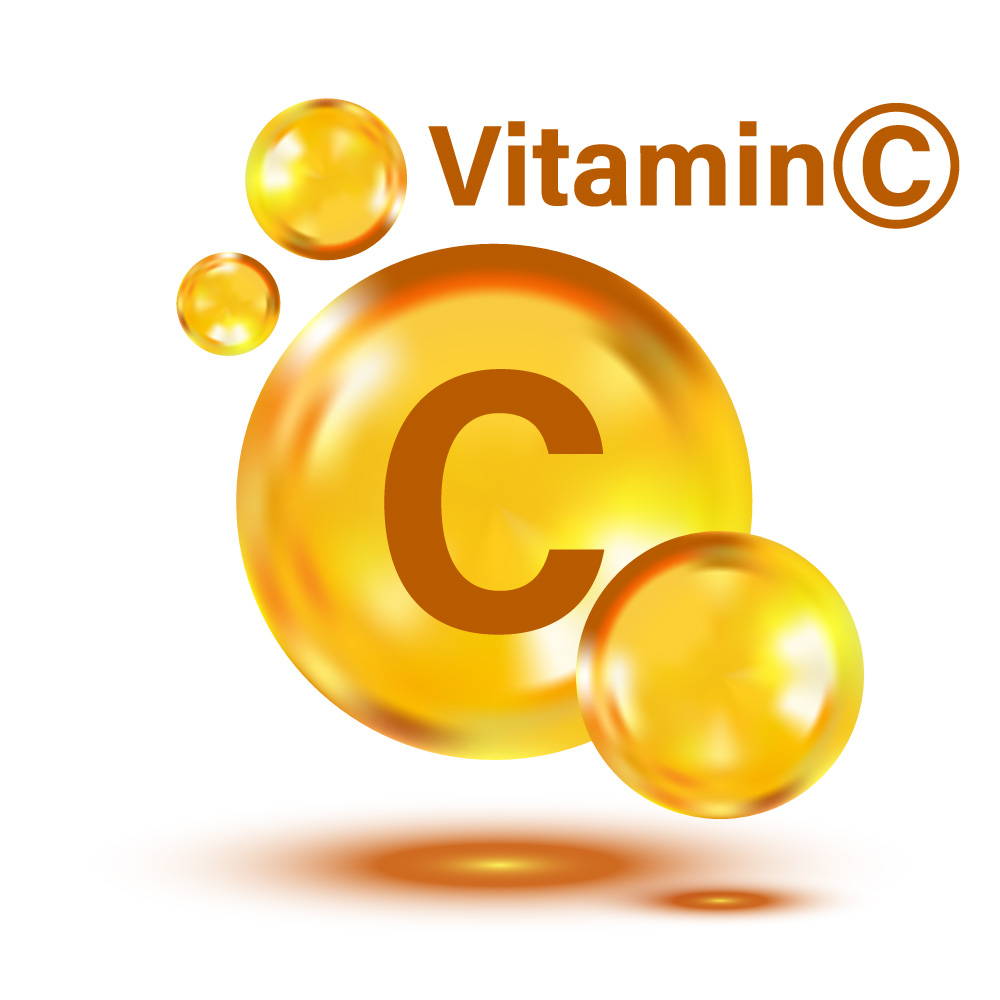SUPPLEMENT - VITAMIN
Explore our effective micro-nutrients and premium ingredients

What is vitamin C and what does it do?
How much vitamin C do I need?
LifeStage | RecommendedAmount |
Birth to 6 months | 40 mg |
Infants 7–12 months | 50 mg |
Children 1–3 years | 15 mg |
Children 4–8 years | 25 mg |
Children 9–13 years | 45 mg |
Teens 14–18 years (boys) | 75 mg |
Teens 14–18 years (girls) | 65 mg |
Adults (men) | 90 mg |
Adults (women) | 75 mg |
Pregnant teens | 80 mg |
Pregnant women | 85 mg |
Breastfeeding teens | 115 mg |
Breastfeeding women | 120 mg |
What happens if I don’t get enough vitamin C?
What are some effects of vitamin C on health?
Cancer prevention and treatment
Cardiovascular disease
Age-related macular degeneration (AMD) and cataracts
The common cold
Can vitamin C be harmful?
LifeStage | UpperLimit |
Birth to 12 months | Not established |
Children 1–3 years | 400 mg |
Children 4–8 years | 650 mg |
Children 9–13 years | 1,200 mg |
Teens 14–18 years | 1,800 mg |
Adults | 2,000 mg |
Where can I find out more about vitamin C?
References
1. Li Y, Schellhorn HE. New developments and novel therapeutic perspectives for vitamin C. J Nutr 2007;137:2171-84. [PubMed abstract]
2. Carr AC, Frei B. Toward a new recommended dietary allowance for vitamin C based on antioxidant and health effects in humans. Am J Clin Nutr 1999;69:1086-107. [PubMed abstract]
3. Frei B, England L, Ames BN. Ascorbate is an outstanding antioxidant in human blood plasma. Proc Natl Acad Sci U S A 1989;86:6377-81. [PubMed abstract]
4. Jacob RA, Sotoudeh G. Vitamin C function and status in chronic disease. Nutr Clin Care 2002;5:66-74. [PubMed abstract]
5. Gershoff SN. Vitamin C (ascorbic acid): new roles, new requirements? Nutr Rev 1993;51:313-26. [PubMed abstract]
6. Weinstein M, Babyn P, Zlotkin S. An orange a day keeps the doctor away: scurvy in the year 2000. Pediatrics 2001;108:E55. [PubMed abstract]
7. Wang AH, Still C. Old world meets modern: a case report of scurvy. Nutr Clin Pract 2007;22:445-8. [PubMed abstract]
8. Institute of Medicine. Food and Nutrition Board. Dietary Reference Intakes for Vitamin C, Vitamin E, Selenium, and Carotenoids . Washington, DC: National Academy Press, 2000.
9. Stephen R, Utecht T. Scurvy identified in the emergency department: a case report. J Emerg Med 2001;21:235-7. [PubMed abstract]
10. Health information data from U.S. National Institutes of Health
Better than others
Nine medical doctors used their research findings to develop Dr’s Grow UP in the biotech lab. The result is a product containing 22 ingredients mixed in the perfect proportions to maximize bone health and height development.
Why Bone Science?
Science-Backed Formulations
Carrying out extensive research and keeping up-to-date with the latest scientific findings is our key to develop superior formulations.
Best Growth Support for Kids & Teenagers
Our products contain essential ingredients for a healthy bone and height development of kids from 10 years and teenagers.
Fighting Aging Effects
We are dedicated to create formulations that delay and restrict the extent of adult’s bone density decrease.
Unmatched Product Quality
Only 100% natural ingredients that contain no soy, no gluten, no GMOs, no maltodextrin, and no artificial flavors, colors, or preservatives.
Product Safety
All of our products are manufactured in the US in an FDA and NSF cGMP registered facility.
